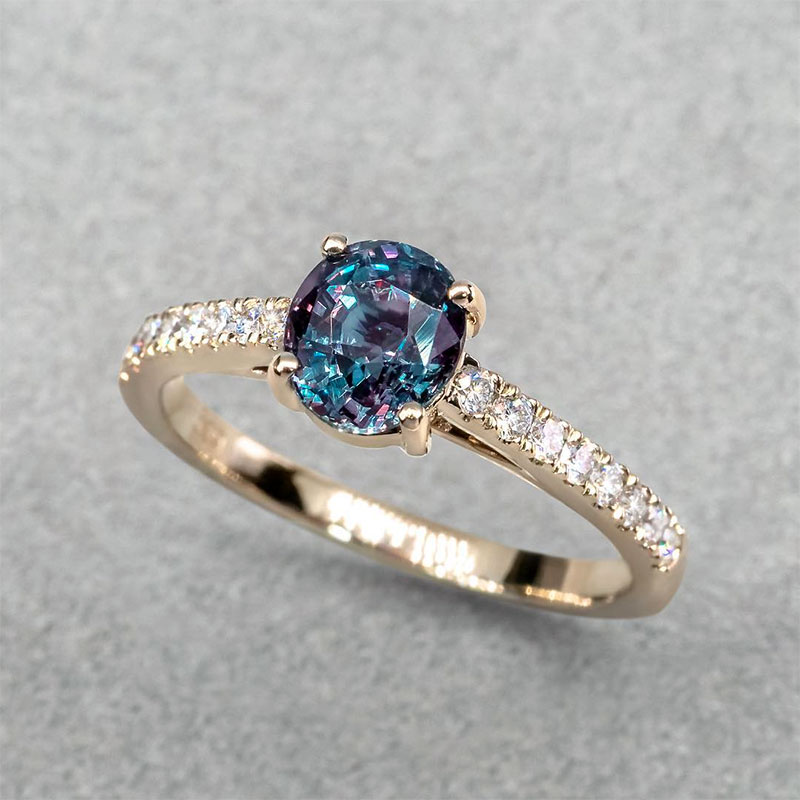
Alexandrite Engagement Rings
Alexandrite rings are becoming increasingly popular as June birthstone, for marriage milestones, and engagement rings. In fact, you can think of alexandrite rings as the new diamond engagement ring for the 21st Century.

Why Are Alexandrite Rings Popular?
Alexandrite stones change color depending on the type of light to which they are exposed. They shift from bluish/greenish to reddish/purplish.
The symbolism of a ring that changes color can be easily imagined. The two colors in Alexandrite rings can be thought of as representing the bride and groom becoming one in matrimony.

Along similar lines, the changing colors can be thought of as a marriage in which the partners change, grow, and have their own identity but still remain united by their commitment.
Hardness
The diamond is not colorful but is, instead, valued for its hardness and sparkle. Alexandrite rings also sparkle and are comparable to diamond rings in their ability to last through time. For a quick comparison, consider that diamonds are a 10 on the major hardness scale while Alexandrite is an 8.5.
Alexandrite Price
If diamond rings are compared in price to alexandrite rings of equal quality and size, the Alexandrite rings may be more expensive. That’s right! A 2.5 carat, natural alexandrite ring may sell for $64,000. Why? Alexandrite is rare and beautiful, and the demand for the stone exceeds the supply.
Alexandrite has several outstanding qualities. For example, the stone, like opal, changes color depending upon the type of light which shines on it. In sunlight and fluorescent light, the stone will look bluish-green. However, in candlelight and regular electric light, the stone appears deep pink to light maroon-red. The greater the change in color, the greater the price is for these chameleon-like stones.
The clarity of alexandrite stones, in part, determines the cost of the stone. Imperfections, which appear as little flakes or sometimes like small dust particles, lower the cost. Totally clear alexandrite is quite rare.
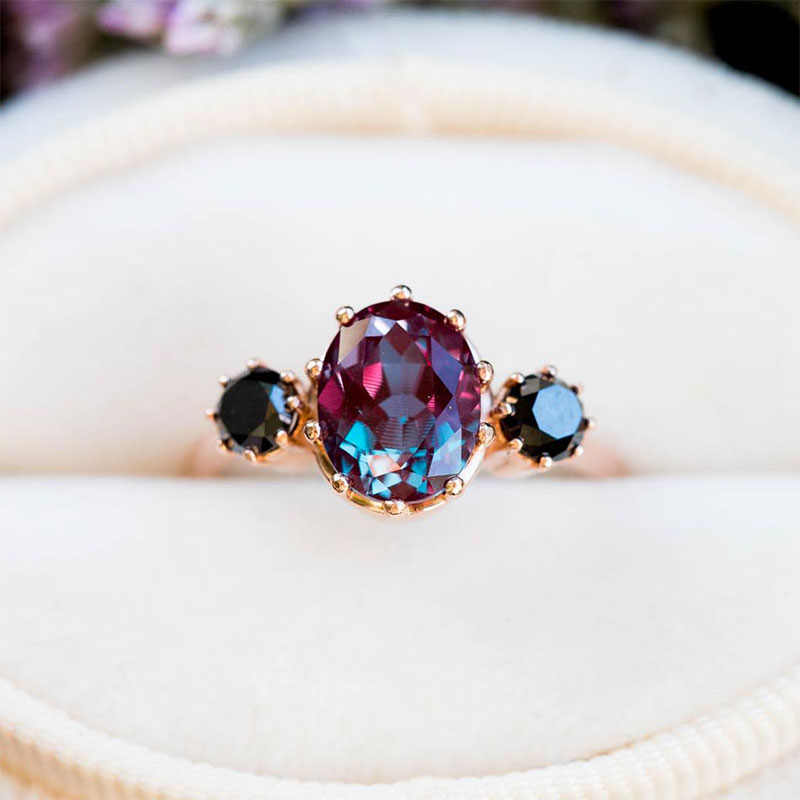
When an alexandrite stone displays two colors simultaneously, it is said to bleed. Stones which bleed are common but less valuable than stones which change colors completely. Stones which display gray/brown coloring are less valuable.
Cost Alternative to Natural Alexandrite Rings: Use Created Stones
Good news! Alexandrite rings aren’t just an item for the rich and famous anymore. If the cost of natural alexandrite is prohibitive, consider a created alexandrite stone which does change color, too. Why pay extra for the stone simply because it is natural?

Because there are two processes for creating Alexandrite, it is possible to find stones which are pure and clear as well as those which have the appearance of slight flaws.
The New June Birthstone and Wedding Anniversary Rings
Alexandrite rings are popular gifts for 35th and 45th wedding anniversaries. However, they are most often given to celebrate a 55th wedding anniversary.
Birthstone Gifts
The once popular pearl and moonstone rings, commonly held as the June birthstones, can be a challenge to care for, but alexandrite rings are harder and, therefore, more durable, making them a perfect choice for June birthstone rings.
History of the Stone
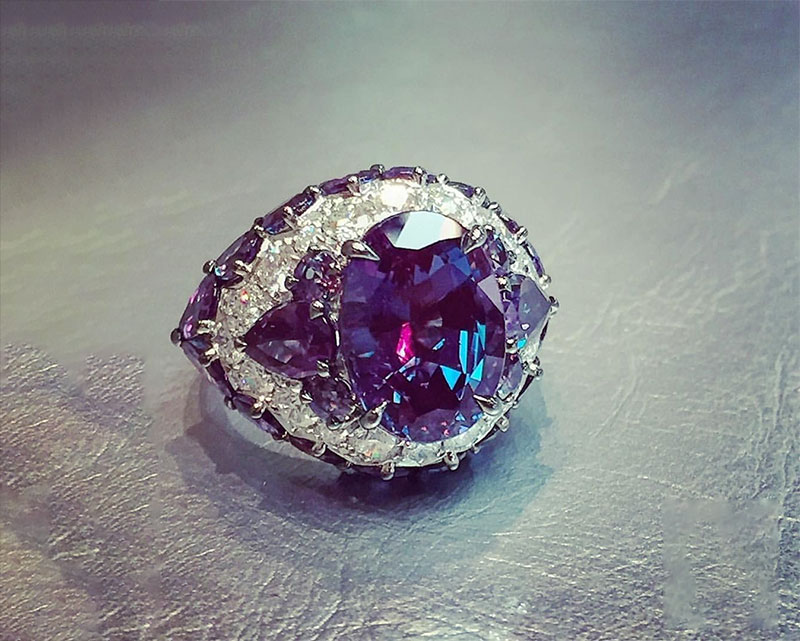
Alexandrite was named for Czar Alexander II of Russia. Since alexandrite’s discovery in the Russian Ural Mountains in about 1830, alexandrite rings have been prized for their durability, brilliance, and ability to appear like two different stones. In 1987 Alexandrite was also discovered in Brazil, although Brazilian alexandrite is considered generally less satisfactory than Russian alexandrite. Madagascar and India also produce alexandrite, but the stones are not as valued as those from Brazil and Russia.
Healing Quality of Alexandrite
Alexandrite is thought to repel negative energy and to capture positive energy from the environment. The stone has been used for healing various physical disorders. Because the stone can change itself, it represents the body’s ability to change from sickness to health.
Natural Vs. Synthetic Alexandrite
Good quality Natural Alexandrite Gemstones are very expensive and out of reach for most to purchase. This is why synthetic/created alexandrites are increasing in popularity as an affordable alternative. Today, several labs can produce synthetic lab-grown stones with the same chemical and physical properties as natural Alexandrite.
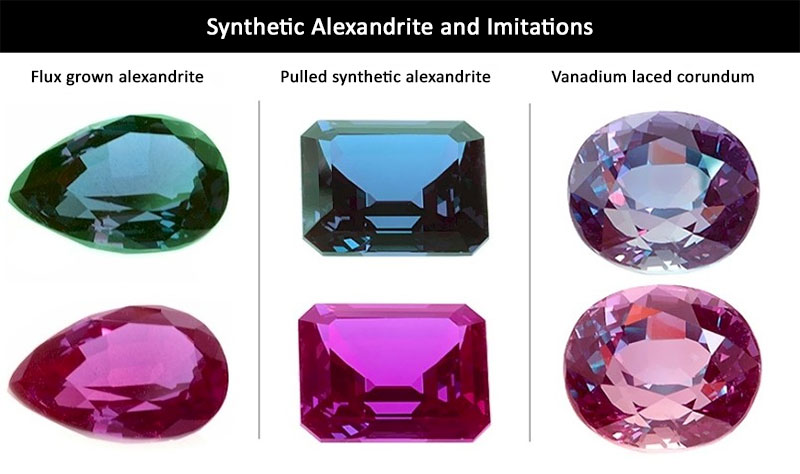
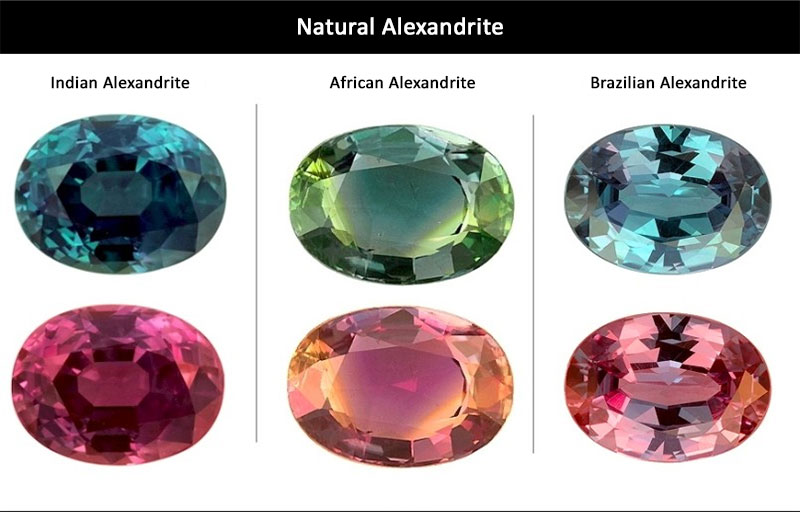
As stated previously, Natural Alexandrite is expensive & rare. This is why it’s one of the gemstones we’ve learned to make in the Lab.
Difference between natural and synthetic alexandrite
- GOOD Lab Created Alexandrites are chemically identical to those mined naturally.
- Natural Alexandrite’s Chemical Composition is beryllium aluminum-oxide (BeA12O4)
- Lab Created Chemical Composition is beryllium simulated alexandrite aluminum- oxide (BeA12O4)
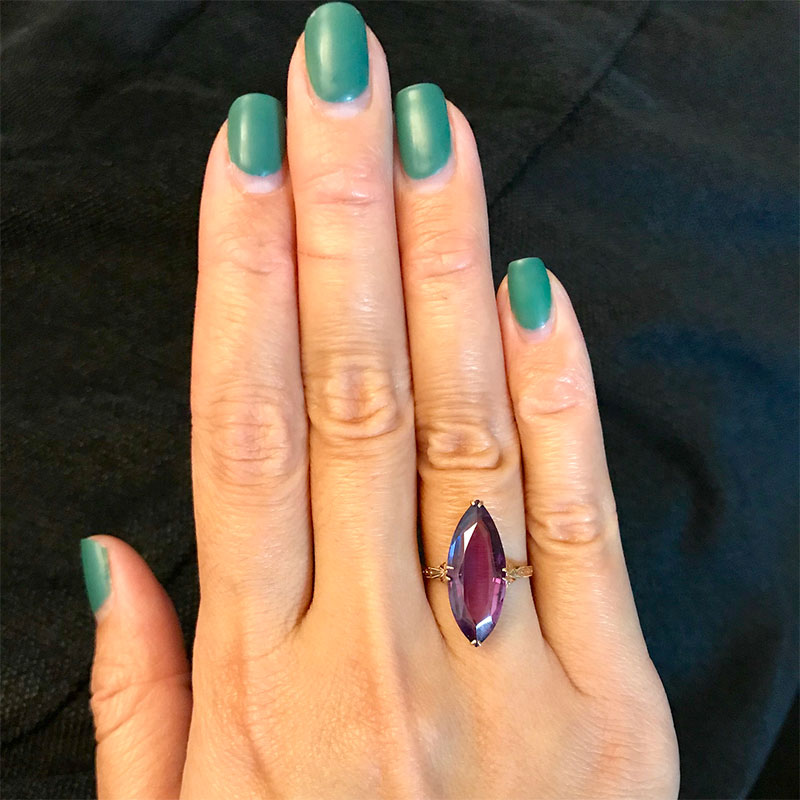
Color change
Compare natural alexandrite changing color to synthetic alexandrite changing color.
Natural Alexandrite Changing Color Videos:
Fake/Imitated Alexandrite
There’s a significant difference between Lab Created / Lab Grown and Imitation.
Imitation Alexandrite is made from synthetic Corundum. It does not have the same Chemical Composition and properties. Imitation Gemstones’ color – changing characteristics are inferior as well.
Before you purchase, be sure to clarify with the Seller, if the Alexandrite is Natural, Lab Created / Lab Grown or Imitation.
What does an Alexandrite Gemstone look like?
Alexandrite is known for how it changes color. It is green in daylight or under a fluorescent lamp. In incandescent light*, it changes color to reddish or purplish. Alexandrite is named after Alexander II, a Russian Czar. Alexandrite is the modern June birthstone.
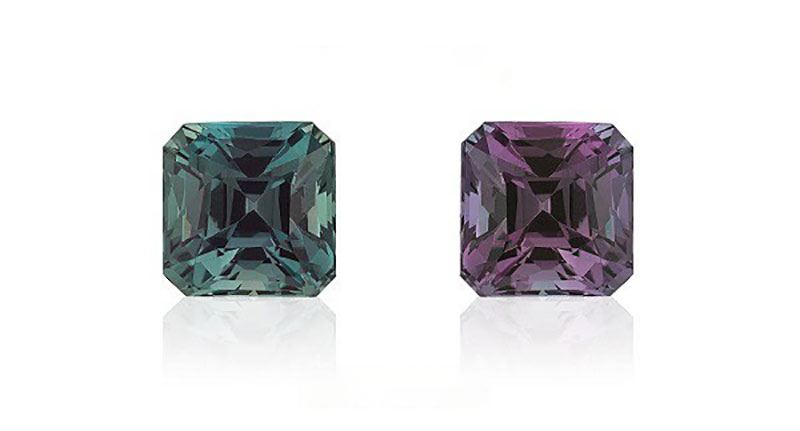
Natural Alexandrite is one of the most rare and most expensive gemstones. When buying Alexandrite, keep this in mind. Also beware of cheap synthetic stones that through some trick are seen to change color similarly to Alexandrite. Always demand a Certified Gemstones whereby the certificate is issued by a Reputed Laboratory or a Reputed Gemologist.

 6 Tips To Help A Guy Buy An Engagement Ring
6 Tips To Help A Guy Buy An Engagement Ring